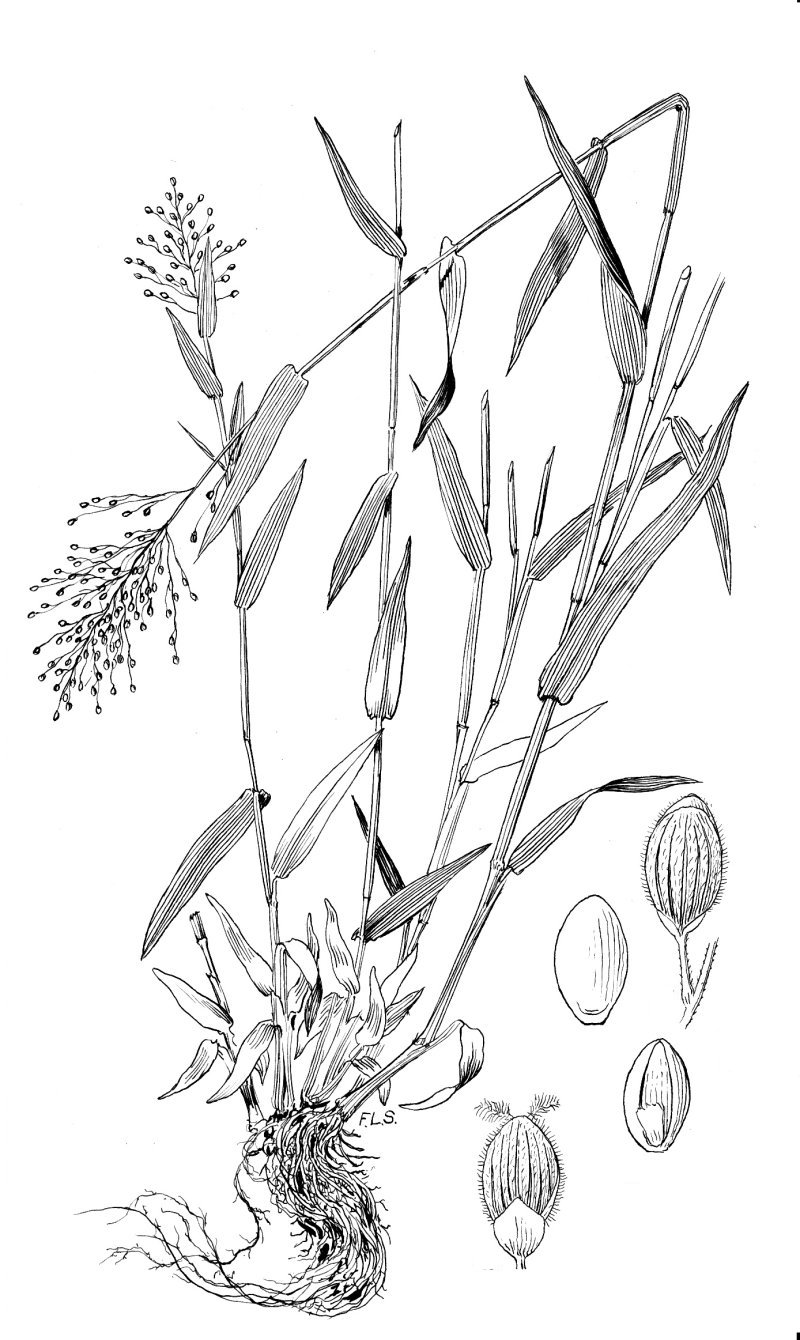
Dichanthelium acuminatum var. lindheimeri Nash. Lindheimer Dichanthelium Habit: Tufted perennial. Culms: Ascending or spreading, 3-100 cm. tall, glabrous or pubescent below, elongate and spreading in autumn, with the early branches long, the later ones in short tufts; nodes swollen, pubescent especially the lower. Blades: 5-8 cm. long, 6-8 mm. wide, glabrous, ascending, often reflexed when old, with a few hairs on the margins at base, glabrous on both surfaces, or minutely puberulent below. Sheaths: Much shorter than the internodes, ciliate on the margins, otherwise glabrous or the lowermost ascending-pubescent. Ligule: Dense hairs, 4-5 mm. long. Inflorescence: Panicle 4-7 cm. long, nearly as wide, branches ascending or spreading, loosely flowered, naked at base. Spikelets: 1.4-1.6 mm. long, about 0.9 mm. wide, obovate, obtuse; 1-2-flowered, turgid, pubescent, the pedicels about as long as the spikelets, or the terminal longer. Glumes: First about one fourth as long as the spikelet, obtuse, the second and sterile lemma scarcely equaling the fruit at maturity, about 7-nerved. Fruit: 1.3-1.4 mm. long, 0.8 mm. wide, elliptic, obtuse, grain free within the rigid firmly closed lemma and palea. Autumnal form: Usually stiffly spreading or radiate-prostrate, internodes elongated, with tufts of short appressed branches at the nodes; blades reduced, involute-pointed and often conspicuously ciliate at the base. Habitat: Dry sandy or sterile woods and open places. June-September. Kansas Range: Southeast (Labette county). Synonyms: Panicum acuminatum Sw. var. lindheimeri (Nash) Lelong Panicum lanuginosum Ell. var. lindheimeri (Nash) Fern. Panicum lanuginosum Ell. var. septentrionale (Fern.) Fern. Panicum lindheimeri Nash